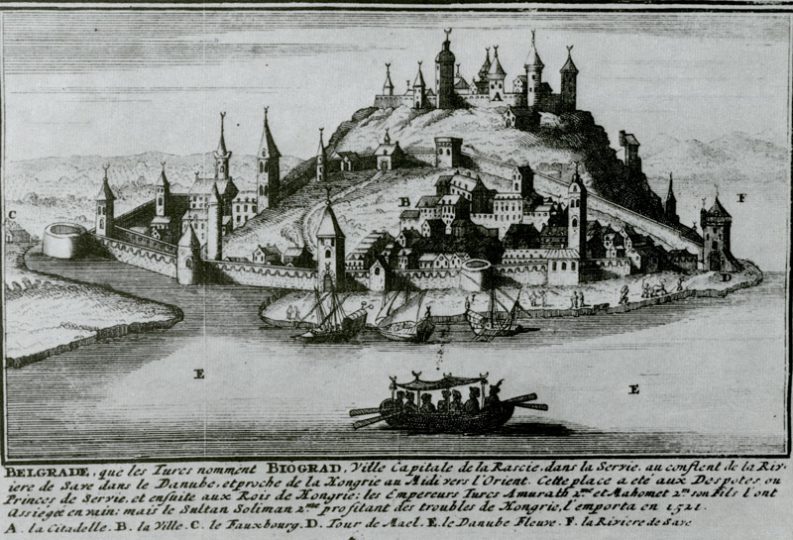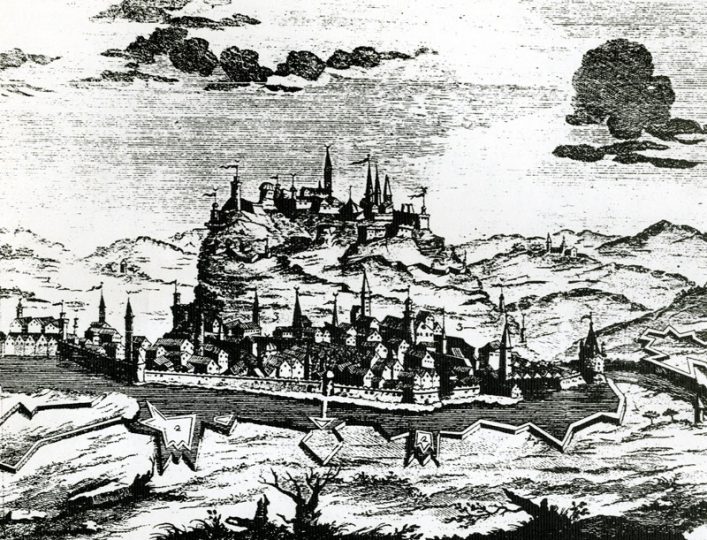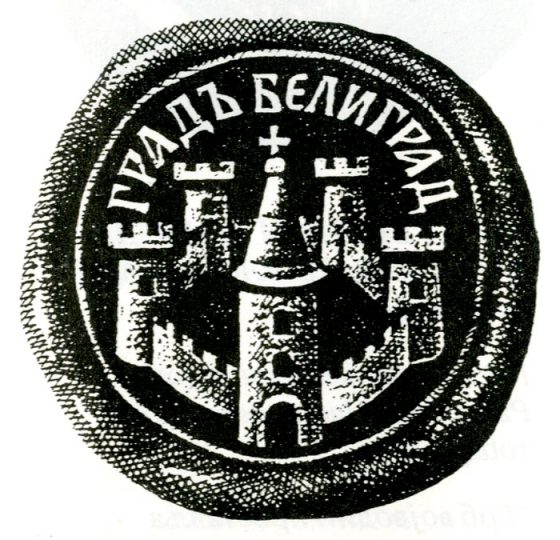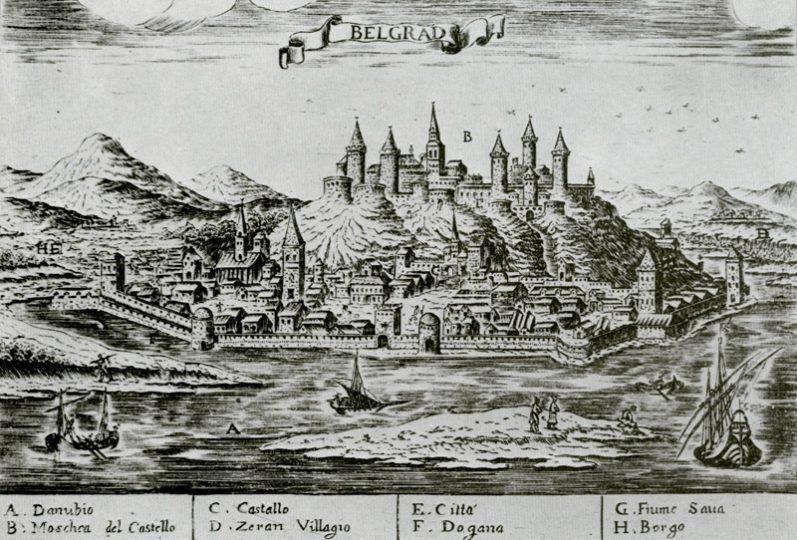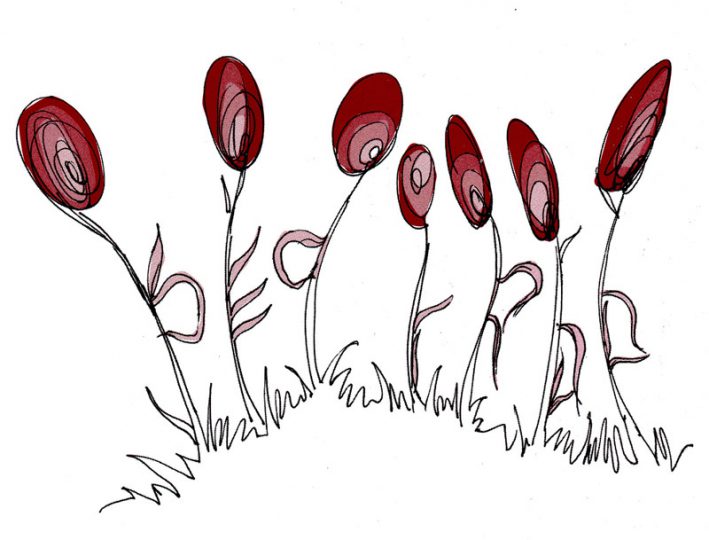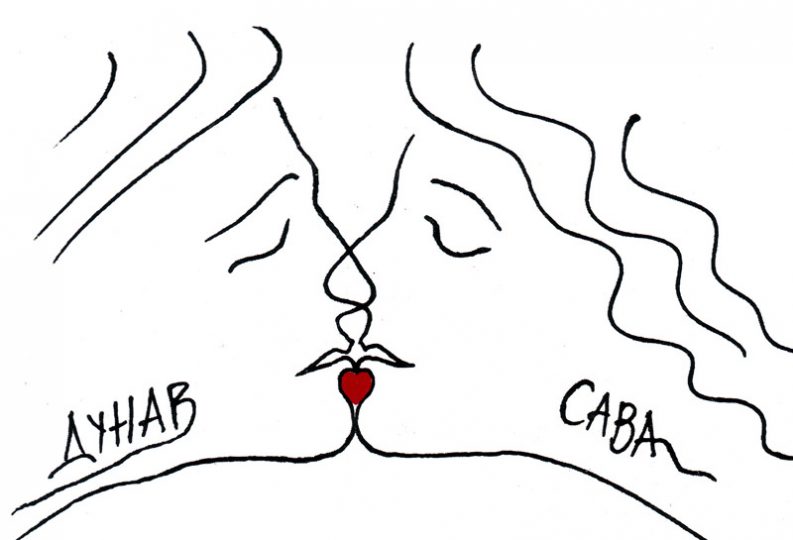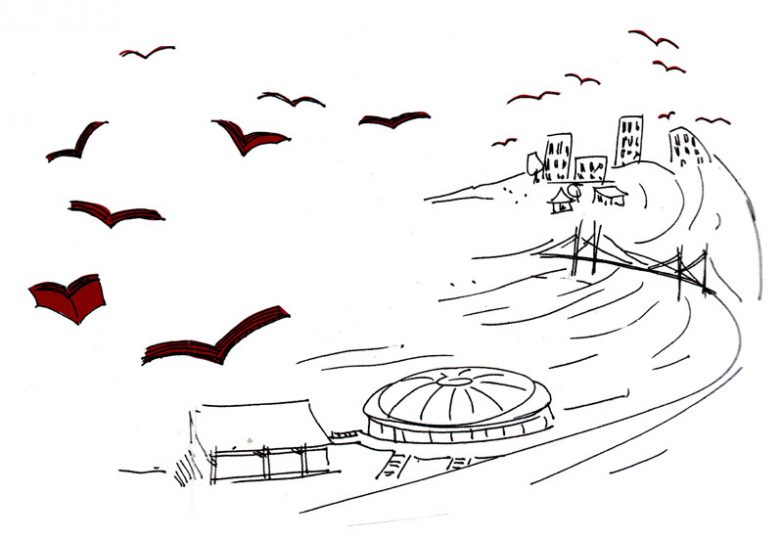Short History of Belgrade
Legend has it Argonauts, mythical Greek seafarers, sailed into the Danube (Ishtar) on their sea voyages. Reaching the spot where the Sava River flows into the Danube they called this river the West Danube and continued sailing. At the very place where the two rivers crossed their water courses, the first settlement developed. It was five thousand years before the new era and the settlement thrived within the frames of the Vinča culture.
Singidunum, as one of the oldest settlements is dated into 298 AD when these areas were inhabited by the Celts and their tribe of Scordisci. Singidunum got its name from the tribe of Singi who lived here and the word “dunum” is a Celtic word denoting a town.
Roman emperors were passing through the town and staying in Singidunum. The place was repeatedly destroyed by Goths and Huns, later restored by the Byzantines, only to become devastated by the Avar and Bulgarian tribes. When the Slavic people reached the area in the seventh century, the town was named Beligrad. According to available sources the name was to describethe white walls surrounding the town.
It was in 878 AD that its Slavic name Beograd was mentioned for the first time in the official bulla1 issued by the Pope John VIII and addressed to the Bulgarian prince Boris Mihail. Its geographic position made Belgrade a frequent target of various conquerors.
During the reign of King Dragutin, in 1284, Belgrade became part of the Serbian state and was proclaimed seat of the ruler. Having arranged marriage of his son Vladislav to the niece of the Hungarian king, Dragutin was given Belgrade with the Mačva Plains as a wedding present. Dragutin ruled Serbia, as a Serbian king, from 1276 until 1282 when he abdicated in favour of his brother Milutin2, but he kept power over the northern part of the state reigning as the “king of Syrmia” until 1316.
In the fifteenth century Belgrade became the capital of the Serbian state during the reign of Despot Stefan Lazarević (1402-1427).
During the Ottoman reign Belgrade became Beligrad – mahalla, and under the leadership of Karadjordje Petrović the town was temporarily liberated in 18063. In the second half of the nineteenth century the Princedom of Serbia pursued active foreign policy under the Prince Mihailo Obrenović.
After Serbian-Turkish relations deteriorated following the grievous incident at the Čukur Fountain in Dorćol in 1862, Prince Mihailo Obrenović went for a visit to Constantinople followed by Serbian delegation. There he was successful in obtaining a ferman (written imperial command, charter) from sultan Abdul-Azizon hand over to Serbian rule the towns of Belgrade, Smederevo, Šabac and Kladovo. The imperial ferman was solemnly proclaimed in the Kalemegdan Fortress and the Belgrade military commander (muhazif) Ali Riza Pasha symbolically handed over the keys of the town to Prince Mihailo. The event was noted for the posterity by a drawing of Adam Stefanović.
It was in 1967 that a memorial was erected on the place where the keys had been handed over. It is a stone block done by sculptor Mihailo Paunović with a relief depicting the event after the drawing of Adam Stefanović4.
The same occasion inspired the erection of the first monumental equestrian statue placed in open space in 1882. The monument was dedicated to Prince Mihailo Obrenović and was executed by Italian sculptor Enrico Pazzi. The bronze figure of the prince on horseback and with outstretched hand indicates regions still to be liberated.The towns that were liberated are inscribed on the bronze plaques along the lower part of the pedestal.
1Bulla is a lead seal used for sealing imperial and papal documents. From the 13th century on the word refers to the document itself in particular to papal ones with appointments of bishops, canonization of saints and definitions of theological issues.
2Serbian King Milutin ruled Serbia from 1281 until 1321 and during almost forty years of his reign he had built and restored more than forty churches in Serbia and beyond.
3Милорад Павић, Кратка историја Београда, Београд 1990.
4Site of the keys hand-over in 1867, Institute for Protection of Monuments of Culture of the City of Belgrade, Belgrade, 2010
Topography of Old Belgrade
Names of parts of Belgrade belong to a genuine treasure trove of terms; some of them are still in use and refer to parts or quarters of our city while others slid into oblivion long ago.
Varoš Kapija (Town’s Gate)
At the turn of the eighteenth century at the crossing point of the present-day Pop-Lukina and Topličin Venac streets there was erected one of the four gates (Vidin Kapija, Sava Kapija, Stambol Kapija1) as the entrance gate to the Belgrade town whereby the entire area was named Varoš Kapija. The gate separating the Serbian part of the town, i.e. the Sava part of the town from the Turkish or Austro-Hungarian parts was destroyed in 1862.
The term Varoš Kapija passed out of use in everyday communication though older residents still use to refer to it.
Skadarlija
“If Paris is the capital of the world, Montmartre is the capital of Paris; if Belgrade is the crossroads of world paths, Skadarlija is its soul2.” The name Skadarska Street first appeared in 1872. Prior to that it was known as Gypsy mahalla where Roma people lived in their run-down and poorhuts and small houses. After the town’s keys had been handed over to Prince Mihailo Obrenović and the Turks had left the area, the Roma moved away from Skadarlija and went to live in other parts of the town. Skadarlija then became place where café owners, petty officials and craftsmen made their homes, where shops and coffee-houses opened.Soon Skadarlija turned into a place where famous writers, journalists, poets, artist like Djura Jakšić, Jovan Jovanović Zmaj, Jovan Skerlić or Žanka Stokić lived and created their art works.
Nowadays Skadarlija is a must see tourist site resembling the old Bohemian quarter of the City of Belgrade.
Students’ Square
Students’ Square is the oldest square in Belgrade. During the Ottoman rule there was a Turkish graveyard located in the place, but in 1824 Serbian authorities installed a big trading market there later called the Big Market. After the regulation works were executed after the year 1869 the areaof Students’ Square became better designed, one half of it was used as a market, and the other half was arranged as a park. One of the most important structures on this Square is the Captain Misha’s Building erected in 1863 as designed by the Czech architect Jan Nevola. The object was built for Misha Anastasijević, rich merchant and business parter to Prince Miloš Obrenović. In the course of its building the original intention that the edifice shouldbe used for housing needs was abandoned and Misha Anastasijević donated the building to his homeland for educational purposes which is clearly stated in the inscription on the building “Misha Anastasijević to his fatherland”. Nowadays this is the seat of the Belgrade University Rectorate. The market was displaced after 1927 and the entire area was then arranged as a park, remaining a park area until the present-days.
There are three monuments in the Students’ Square for the visitors to see – the first one is dedicated to Josif Pančić, statue executed in 1897 by sculptor Djordje Jovanović, then the monument to Dositej Obradović, work of sculptor Rudolf Valdec, which was transferred from Kalemegdan Park in 1930 and the monument to Jovan Cvijić from 1994 and executed by the artist Oto Logo3.
Tašmajdan
The term Tašmajdan came into use with the arrival of the Ottomans to this area. The term itself denotes a quarry i.e. a site where from the stone used to be quarried. Many events made this area part of the town’s history. Two years after the First Serbian Rising, Karadjordje with a group of insurgents organized his camp in Tašmajdan and from there he organized the siege of Belgrade in 1806. After the Second Serbian Rising Prince Miloš Obrenović ordered the old Serbian graveyard to be displaced from Varoš Kapija to Tašmajdan since he planned the building up of the Serbian town in 1826. Only ten years later, in 1835, an order was issued for the Church of St. Mark to be built on theTašmajdan plateau. The church was destroyed during the 1941 bombardment of Belgrade. About ten years before the old church was bombed, the building of a new church had started in 1931 and the works lasted for the next ten years. Executed in the Serbian-Byzantine style, it was created by architects Petar and Branko Krstić. At present the relics of Emperor Dušan are buried in the nave of the church, and the crypt shelters the remains of the last king from the Obrenović dynasty, King Aleksandar Obrenović and his wife Draga Mašin.
Nowadays Tašmajdan is a well arranged park in Belgrade offering various entertainment forms4.
Sava Kapija was the south gate connecting the Lower Town with the Sava part of the town. Parts of the gate were destroyed during the bombardment of Belgrade in 1944. In 2009 the gate was restored.
Stambol Kapija was on the way out of the town of Belgrade and since the road leading to Istanbul (Stambol) was passing through it the gate got its name. The gate was built by Austrians in the first half of the eighteenth century. Its location had been in between the present-day National Theatre and the Monument to Prince Mihailo. Prince Mihailo ordered in 1866 the gate to be pulled down since in its vicinity many Serbs lost their lives during the Ottoman reign (Др Видоје Голубовић, Стари Београд топографски речник, Београд, 2006, 47 – 48, 57, 205, 219.)
2Kosta Dimitrijević – writer, critic and essayist
3Др Видоје Голубовић, Стари Београд, топографски речник, Београд, 2006, 225.
4Др Видоје Голубовић, Стари Београд, топографски речник, Београд, 2006, 227-235.
ДивнаЂурић-Замоло, Београд као орјентална варош под Турцима 1521-1867, Музеј града Београда, Београд 1977, 159 – 181.
To Belgrade With Love
The first mention of Belgrade in Serbian literature was made in the papers of the archbishop Danil II1 who wrote about the arrival of the Byzantine princess Simonida, wife to King Milutinin 1315. She was to meet Dragutin, brother to King Milutin, and his wife Catalinain Belgrade.
Thanks to the Life of Despot Stefan Lazarević written by Bulgarian writer and philosopher, Constantine the Philosopher (1380-1431) it is known that Belgrade had been mentioned in the charter this ruler had issued on the occasion of the reconstruction of the town in 1403, when it became the capital of the Serbian medieval state. “Having arrived here, I found the most beautiful place ever, the great town of Belgrade which was ruined and neglected, so I had it built and dedicated it to the Most Holy Mother of God…”Belgrade remained a town dedicated to the Most Holy Mother of God, while the Saint Patron’s Day of the town became the Ascension of Our Lord Jesus Christ Day. This holy day (zavetna slava) symbolically represents the Ascension i.e. the rising from the ashes of the city and hopes for good prospects in the future.
Many have honoured Belgrade with the best of their achievements and thus became part of its history. Vasko Popa, Duško Radović, Desanka Maksimović wrote verses about Belgrade and Ivo Andrić, Miloš Crnjanski, Momo Kapor, Rabindranath Tagore wrote pagesabout it.
Good Morning, Belgrade
Belgraders, love and keep Belgrade safe.
Belgrade has you only.
…..
Take your children or grandchildren to the Book Fair,
They can be saved only if they would do and love what you didin’t have.
…..
Who was lucky enough to awake this morning in Belgrade
He should’t ask for anything more in life.
More than that would be immodest.
Duško Radović


